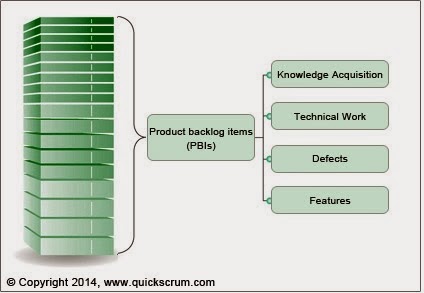In many ways, scrum
is all about meetings. Once the product backlog
is created by the product owner, the
meetings starts, and keeps on occurring until the entire project is completed.
While some of the meetings such as the sprint
planning, sprint review, and the sprint retrospective are “planned”
meetings, and the scrum guide lays down clear guidelines as to how they should
be conducted and what should be availed from them, it may be required to hold
special meetings as and when needed to streamline the scrum process. The scrum guide does not mention anything
about non-standardized meetings, or those which have been called impromptu. It
is important to plan and organize such meetings to make them effective in
scrum.
1.
Meet only if required
First and foremost, if the information can be conveyed
through a memo, emails, or a small presentation, don’t conduct the meeting. One
of the key management strategies is to identify the nature and requirement of
conveying the information to team members. If the nature of information is
“simplex” i.e. information needs to be conveyed only “one way”, a lot of time
can be saved by just sending a memo. Typically, the scrum master or the product owner may need to brief up the team
members regarding the feedback availed from the stakeholders, or just let the
team know about the time a particular meeting is scheduled. In such instances,
it is not required to hold a special meeting to convey “one way” information
since a feedback or further discussion is not expected or required with respect
to the message conveyed.
2.
Set up clear objectives for the meeting
If a meeting is supposed to be held, it should have an
objective! It is meaningless to conduct meetings where objectives are not
clearly explained and the team does not have any idea why the meeting is called
for, or what is planned to be done in the meeting. A proper agenda should be
created beforehand and conveyed to the team well in advance so the team knows
why the meeting has been called, and what is going to be discussed in it.
3.
Instruct the members to prepare for the meeting
If you find it necessary to hold the meeting, and have
prepared an agenda to explain what you plan to discuss in the meeting, it is
recommended you instruct or inform the team members how they ought to prepare
for the meeting. Ideally, a list should be prepared explaining what is expected
from the team member, and what activities the particular member should carry
out before attending the meeting. If you have team members belonging to
specific groups depending upon their area of work and specialization, you could
prepare a common list of instructions stating what and how each member in the
group should do to ensure their participation in the meeting is a positive
one.
4.
Prepare a plan of action
Now that you have done everything to make your meeting
a successful one, it is important you achieve the objective of holding your
meeting in the first place. It is important to inform the team members what
they are expected to do once the meeting is completed. More than often, people
attend meetings and simply forget about what was discussed and whether the
objective of holding the meeting was satisfied once the meeting is over. The
reason why this happens is there is no “Call-to-action” linked with the particular
meeting. Each member should know that he or she is supposed to do to complement
the meeting, and ensure its objectives are properly fulfilled.Read more on
"Please visit http://www.quickscrum.com to download the Quickscrum tool"

